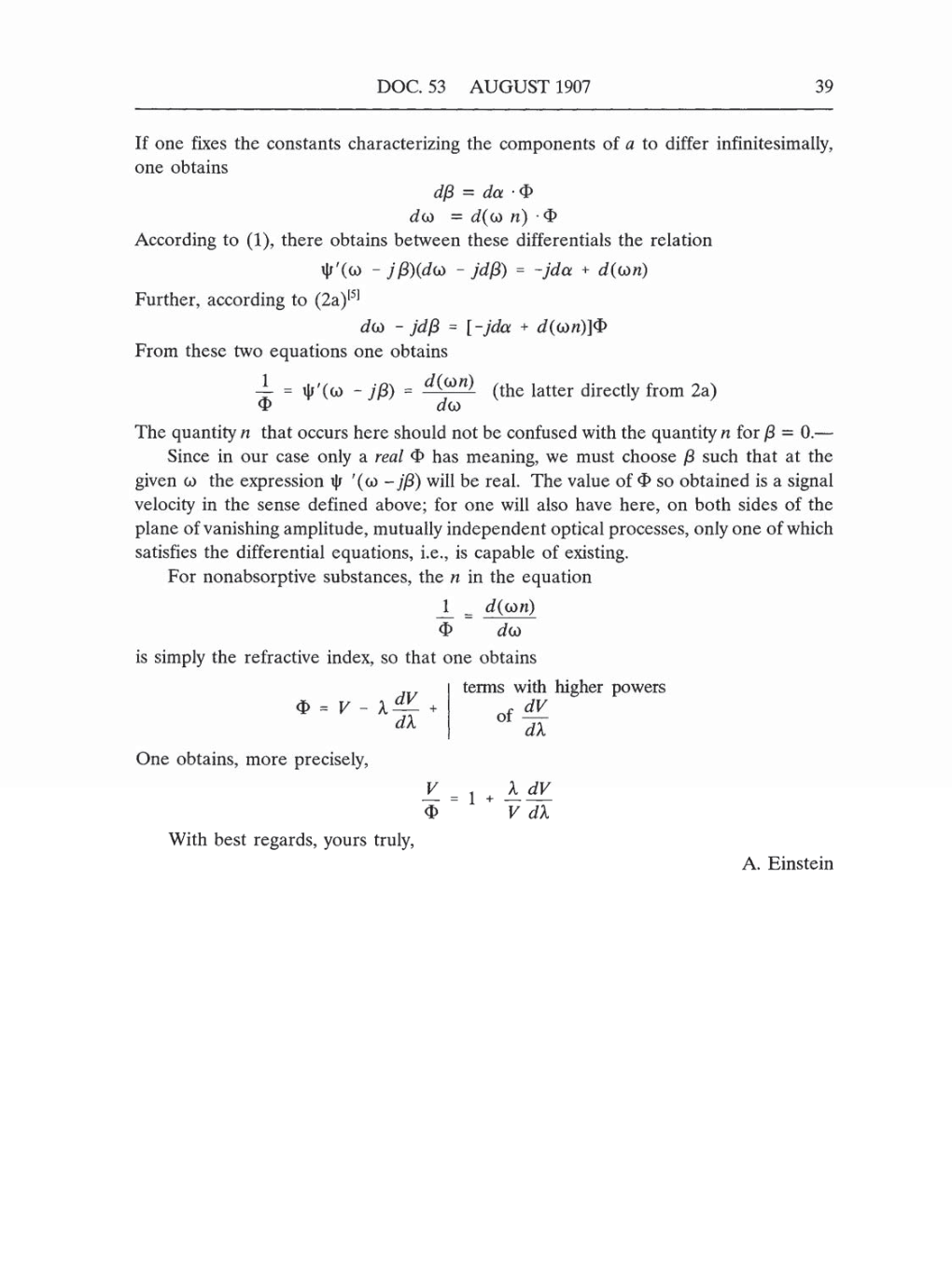DOC.
53
AUGUST
1907 39
If
one
fixes
the
constants
characterizing
the
components
of
a
to
differ
infinitesimally,
one
obtains
dß
=
da
·
(J)
d(x)
=
d(G)
n)
· (E)
According
to
(1),
there obtains between these differentials
the
relation
-
jß)(da)
-
jdß)
=
-jda
+
d(ion)
Further,
according
to
(2a)[5]
d(s)
-
jdß
=
[-jda
+
d(O)n)]^
From these
two equations
one
obtains
-
=
i|j'(g)
-
jß)
=
d((üri)
(the
latter
directly
from
2a)
(J) dix)
The
quantity
n
that
occurs
here
should not be confused with the
quantity
n
for
ß
=
0.-
Since in
our case
only
a
real
(E)
has
meaning,
we
must choose
ß
such
that
at
the
given (o
the
expression
i|r
'(g)
-
jß)
will be real.
The
value
of
(J) so
obtained
is
a signal
velocity
in
the
sense
defined
above;
for
one
will also have
here,
on
both
sides
of the
plane
of
vanishing
amplitude,
mutually
independent
optical processes, only
one
of
which
satisfies the
differential
equations,
i.e.,
is capable
of
existing.
For
nonabsorptive substances,
the
n
in the
equation
J_
=
(i(G)n)
(&
d(x)
is
simply
the
refractive
index,
so
that
one
obtains
o
=
v
-
A-
+
terms
with
higher
powers
dX
One
obtains,
more precisely,
V
9
1
+
X
dV
V
dX
With
best
regards,
yours truly,
A.
Einstein
